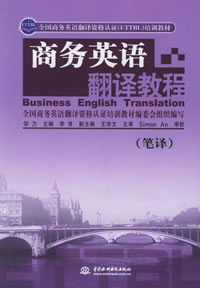A Journey into Chinese-English Environmental Translation
作者:古龙 2009-07-04




语际翻译公司 转载请注明https://www.scientrans.com
∗本栏目部分文章内容来自互联网,部分已经过本站编辑和整理,如有版权事宜请联系Email/MSN jesczhao@hotmail.com
Hoodoo is an actual word (from similar roots to "voodoo"), and refers to bizarre rock pinnacles or columns formed in arid regions that are subject to occasional heavy rainfalls (Bates and Jackson 1987). Although much of the Guangxi karst is certainly fantastic in form, the processes of formation are somewhat different due to the humid climate. So, hoodoo can be eliminated as a possible translation. Fungling is obviously a transliteration of the Chinese pronunciation, but does not follow current pinyin (romanisation) usage. Needle karst sounds reasonable, but would appear to have little currency in the geomorphological literature. Having eliminated all of these dictionary options, we can look at what writers most commonly use, and here the straight pinyin transliteration seems to win—as long as it is accompanied by a description or brief translation in the manner of Sweeting (1995). Interestingly, European karst terminology tends to focus on the forms of the individual hills; thus there is tower karst and cone karst, among others. Sweeting (1995) notes that, for example, the term 'tower karst' cannot be applied to fenglin because one area of fenglin may contain hills of a wide variety of shapes.
Sometimes we come across compound words that simply do not make sense translated directly into English. Thus, for example, many writings on Yunnan province refer to the liti qihou, or 'three-dimensional climate', of the mountainous region in the northwest of the province. What this refers to is fairly clear—the large difference in altitude between the valley floors and the plateaux and mountain tops results in a marked vertical gradation of climatic zones over a short horizontal difference. For instance, if you travel from the famous town of Lijiang to pretty Lugu Lake, you must cross the gorge of the Jinsha River, the name given to the upper reaches of the Yangtze. Starting from a cool plateau above 2000 m, in a short space of time you plunge down a dusty zigzag road to the valley floor, where you see bananas and mangoes growing on the mighty river's banks. It's an impressive display of liti qihou. Although the phenomenon is of course common to all mountain environments, the problem is how to translate this phrase into English. We do not normally think of climate as having dimensionality in the sense that there could be a difference between a 2-d and a 3-d climate. Probably the best solution is to paraphrase the idea, something like a "steep vertical climatic gradient", which unfortunately sacrifices some of the original's elegance.
Conclusions
What can we take from this discussion on environmental translation? Personally, the main conclusion that I would make, and here I am of course biased, is that it is an absolutely fascinating field, one where it is possible to learn much about the world around us. Secondly, and one that translators should already be aware of, is that we shouldn't put total faith in dictionaries. Dictionaries are compiled by people like you and me, with a finite knowledge of the world, and so are not infallible. The most up-to-date dictionary, too, is always out of date, as new words and phrases are constantly added to a language and old ones go out of fashion. And thirdly, research unfamiliar terms thoroughly—indeed, you will never cease to stumble over interesting facts and opinions during your journey through the lesser-travelled paths of the linguistic world.
1.nishiliu 泥石流
2.yanxieliu 岩屑流
3.tushiliu 土石流
4.qihouboianhua 气候变化
5.shengtaihuanjing 生态环境
6.jiandi,huangtujian 墹地,黄土墹
7.haizi 海滋
8.haishishenlou 海市蜃楼
9.bazi 坝子
10.gufeng 孤峰
11.fenglin 峰林
12.fengcong 峰丛
13.liti qihou 立体气候
Figure 1: The pinyin and characters for the Chinese words that appear in the text, in order of occurrence.
来源:互联网
- 相关文章

- 没有相关文章
- 评论
- seme:文章内容文章内容文章内容文章内容文章内容文章内容文章内容文章内容文章内容 章内容文章内容文章内容文章内容文章内容
- seme:文章内容文章内容文章内容文章内容文章内容文章内容文章内容文章内容文章内容 章内容文章内容文章内容文章内容文章内容

- A Journey into Chinese-English Environ…
2009-5-29 11:16:54 - Introduction One of the great pleasures—and occasionally frustrations—in translation is hunti...
- 第四届IEEE生物信息与生…
2009-6-30 19:42:01 - 基本信息 主办单位: 四川大学,IEEE生物医学工程协会(EMBS) 承办单位 开始日期 2010/06/18 结束日期 截稿日期 2009/1...
- 第九届全国光电技术学术…
2009-6-30 19:35:58 - 基本信息主办单位: 中国宇航学会光电技术专业委员会承办单位 开始日期 2009/11/01结束日期 截稿日期 2009...















